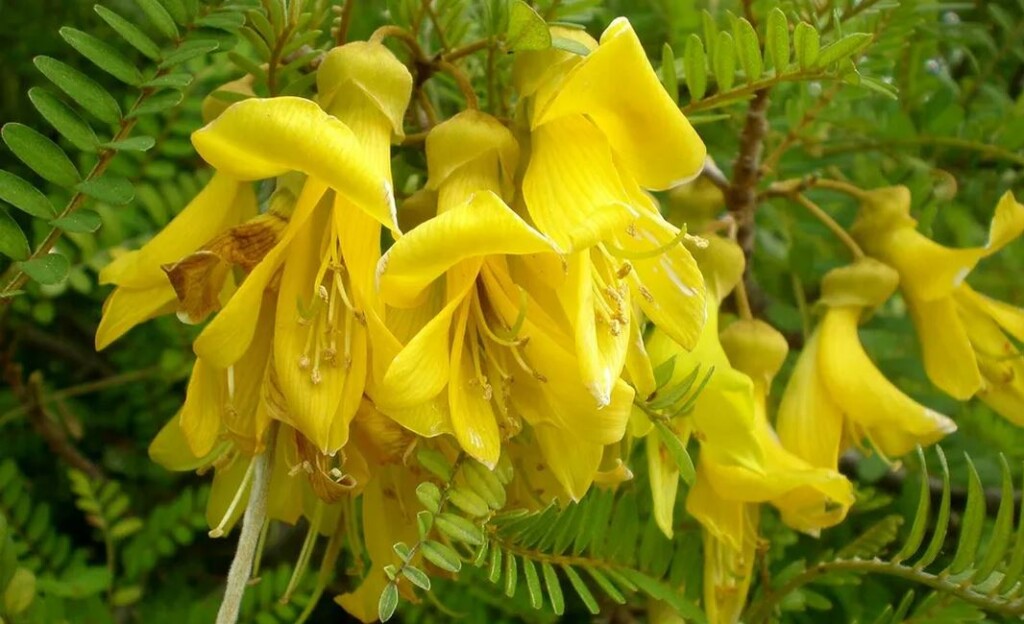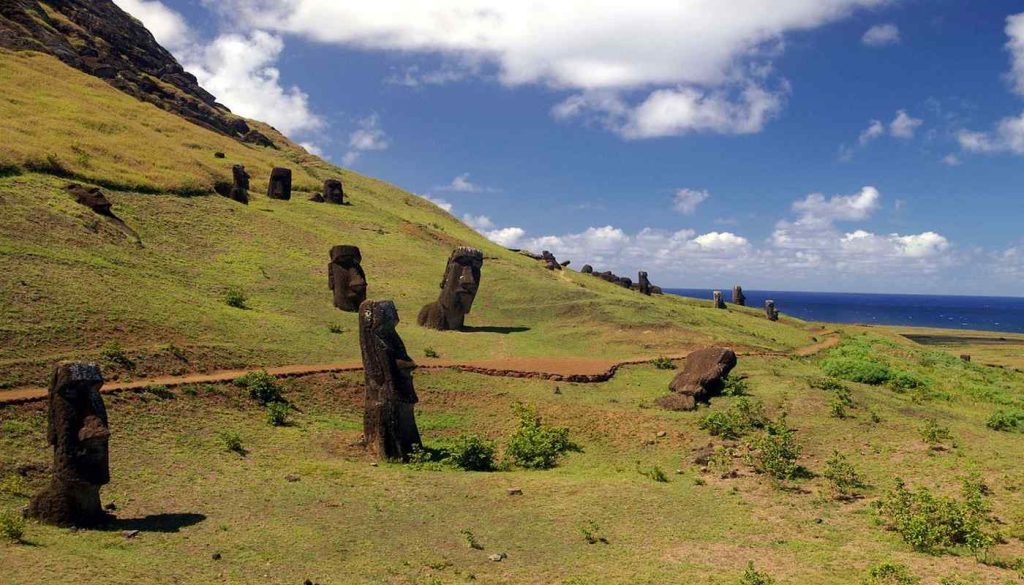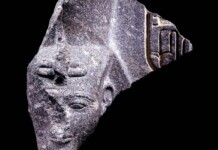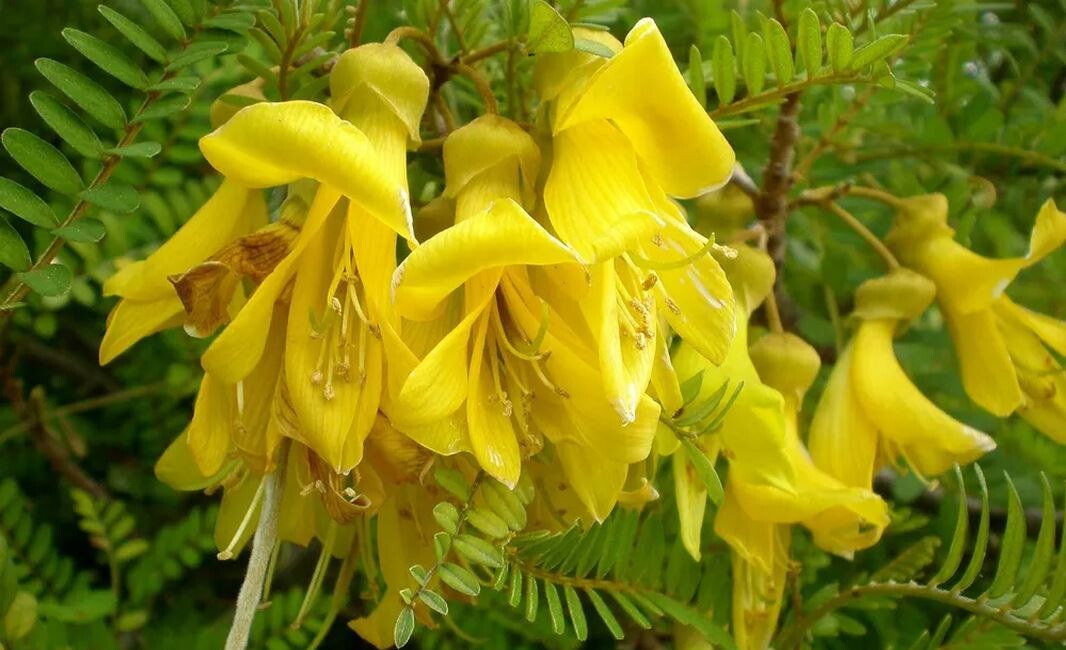
If you’re the kind of person who likes rare things, then the toromiro tree would be a truly exceptional addition to your ornamental garden.
That’s the only place you’re likely to find the toromiro these days, 70 years after it went extinct on its native island of Rapa Nui—which most people are likely to know only by its Western name—Easter Island.
Buoyant and salt-resistant, it’s believed the toromiro tree arrived on Rapa Nui 35,000 years ago, and populated the understory of the island’s rich palm tree forests that once existed there.
The tree itself is a remarkable thing, though it could be more accurately described as a shrub rather than a tree. It belongs to the genus Sophora, which is an overcrowded collection of 60 highly varied individuals found all over the Pacific.
Sophora toromiro produces beautiful flowers of yellow drapery reminiscent of those little ghosts made in elementary school out of marshmallows and tissues for Halloween decorations. Its reddish wood is fine-grained and excellent for carving—into statuettes, paddles, and kitchen utensils; examples of which lie in museum collections and which can remain in fine condition after hundreds of years.

Its home of Rapa Nui is a famous case study for human influence on the ecosystem. It’s believed, though also disputed, that the Polynesian settlers of Rapa Nui got a little carried away, shall we say, building the giant Moai statues that make the island so famous today as a tourist destination.
OTHER SUPER RARE TREES: Dinosaur Evergreens Thought Extinct for 2Mil Years Discovered by Park Ranger–the Grove is the ‘Find of the Century’
The palm trees’ branchless trunks made them ideal for use as rollers to move the large stone carvings, some weighing as much as 80 tons, across the landscape. This special use case, along with the need for building boats, firewood, and all other anthropogenic uses, led to mass deforestation and soil degradation which took out the toromiro tree that had been growing in the shade under the palms.
OTHER SUPER RARE TREES: Texas Oak Tree Thought to Be Extinct Discovered in Big Bend National Park
The global climatic elements of the Little Ice Age are also theorized as contributing to the downfall of the palm forests that may have numbered 15 million trees when settlers first arrived.
European settlers added another group of destructive elements that the Polynesians could not—invasive animals. Three species of rats introduced to the island began to prey on the toromiro seeds, reducing their rate of gestation even further to the point that in 1911 when a Chilean botanist arrived to survey the island, he found a single specimen clinging on in the island’s central crater.
This was confirmed by the Swedish botanist Carl Skottsberg, who also recorded there being only one in 1917. Thirty-eight years later, the famous explorer and anthropologist Thor Heyerdahl arrived in his hand-made boat, and sure enough, just one toromiro existed on the whole island; the soil being too poor and waterlogged for the tree to gestate even after three decades.
MORE STORIES OF SURVIVAL LIKE THIS: ‘Important Message of Hope’ Made by Re-Planting Extinct Tree Species on Hawaii
This scraggly survivor had a single branch bearing flowers and seeds, which Heyerdahl collected, safely stored, and passed off to a friend of his named Olaf Selling who propagated the tree in Gothenburg.
As it turned out though, Efraín Volosky Yadlin, an Argentinian-born immigrant to Chile, also collected seeds from the same individual tree, which is why the toromiro and its beautiful flowers can be found in Chilean as well as European botanical gardens.
In 1962, when a German meteorologist climbed down into crater, he found the Heyerdahl-Yadlin specimen was gone.
ALSO CHECK OUT: Flower That Grew Only in York Brought Back From Extinction After 30 Years—First Ever British De-Extinction
So the story of the toromiro’s demise, reported here as an excerpt from Daniel Lewis’ recent book, Twelve Trees: The Deep Roots of Our Future, was almost entirely brought about by the hands of mankind, but so too was its survival.
Maybe palms will one day grow on Rapa Nui again; some passion project by rewilding enthusiasts perhaps. If so, hundreds of toromiro trees stand ready to propagate their old homeland, thanks to enterprising explorers who thankfully knew how to keep mold out of seed packets.
SHARE This Amazing Story From An Amazing Place With Your Friends…




















